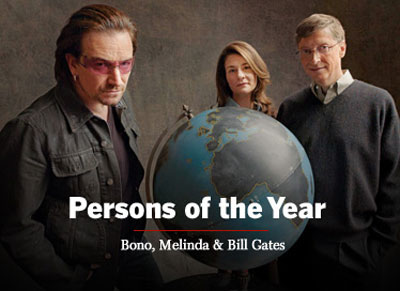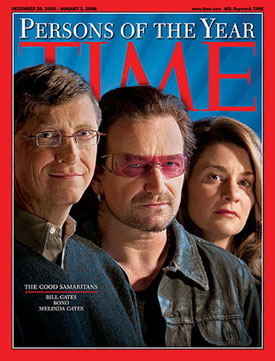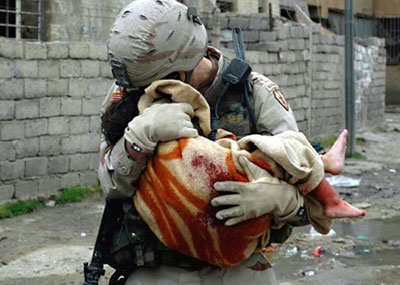Notes
Persons of the Year: The Dark Side

The image TIME used to lead its "Persons of the Year" story has a lot going on.
Let’s start with that globe. Unless there is some geophysical format I don’t know about, the vocabulary of this map is disturbing. Africa, Europe and the Middle East are shown in black with a yellow border that only distinguishing overall land mass. TIME had a clear opportunity to contradict the ignorant tendency to consider Africa in monolithic terms. Instead, the image serves to reinforce a singular, homogeneous stereotype.
The "black Middle East" and "black Europe" also offer some weird associations. One reference it pulls for involves migration or immigration. One inference is that the dark masses, having filled up Africa, are filling up Europe as well. This is a disturbing signifier in light of racial fear engendered in Europe as a result of the recent rioting in France, as well as bombings in London and Spain. The fact that the Middle East, Africa and Europe are all the same dark color discourages one from distinguishing between shades/races/ethnicities of people, or where they come from.
The scale of the world is also curious.
If the globe was a normal size, it would be relatively innocuous.
The fact that it’s unusually large, however, makes its size an issue in
relation to the scale of the human figures. As just one possible
reading, perhaps these larger than life personalities are supposed to
have Africa’s relatively large problems under control?
It seems a good thing to name a collective as "Persons of the Year." But what about the gender factor?

In the shot above, why is the woman set back — and almost
obscured by the problem/globe? Is Melinda back there because she lacks
star power? If anything, the placement suggests that a woman is not
equal to a man if her prominence is somehow a factor of her mate’s
wealth and/or his last name. Throw Bono in there with Microsoft’s rock
star, and Melinda’s weighting becomes tenuous. In the top shot, she
could be the brains behind the Gates foundation; however, she could
also be Bill’s subordinate. The cover raises similar questions.
Melinda is last in line, shortest in stature, and literally fighting
the shadows.
Finally, in spite of the tremendous amount of money Bill Gates
has given to charity, I wonder how much value he recoups from the
investment — not to mention, the publicity and recognition like this.
According to Wikipedia, Gates had committed about a third of
his lifetime income (about $29 billion) to charity. (Gates has a net
worth of approximately $51 billion.) At the same time, his huge
philanthropic investment in Africa allows him to advocate for
international treaties upholding strict intellectual property rights.
Although the issue, in relation to Africa, primarily concerns respect
for drug patents, it also has application to the Gates foundation stock holdings in pharmaceutical companies, the sale of Microsoft technology in Africa, and the protection of Microsoft’s intellectual property in the global marketplace.
(What also bothers me about this shot is how it reinforces the idea
that investment in human welfare has somehow officially become an
extra-governmental responsibility.)
That is just what strikes me initially. I’m sure there is a lot more to mine here.
(image 1 & 2: Gregory Heisler/Time. ”TIME "Persons of the
Year" 2005 Special double issue. December 26, 2005/January 2, 2006 Vol.
166 No. 26. Cover and article lead)


Reactions
Comments Powered by Disqus